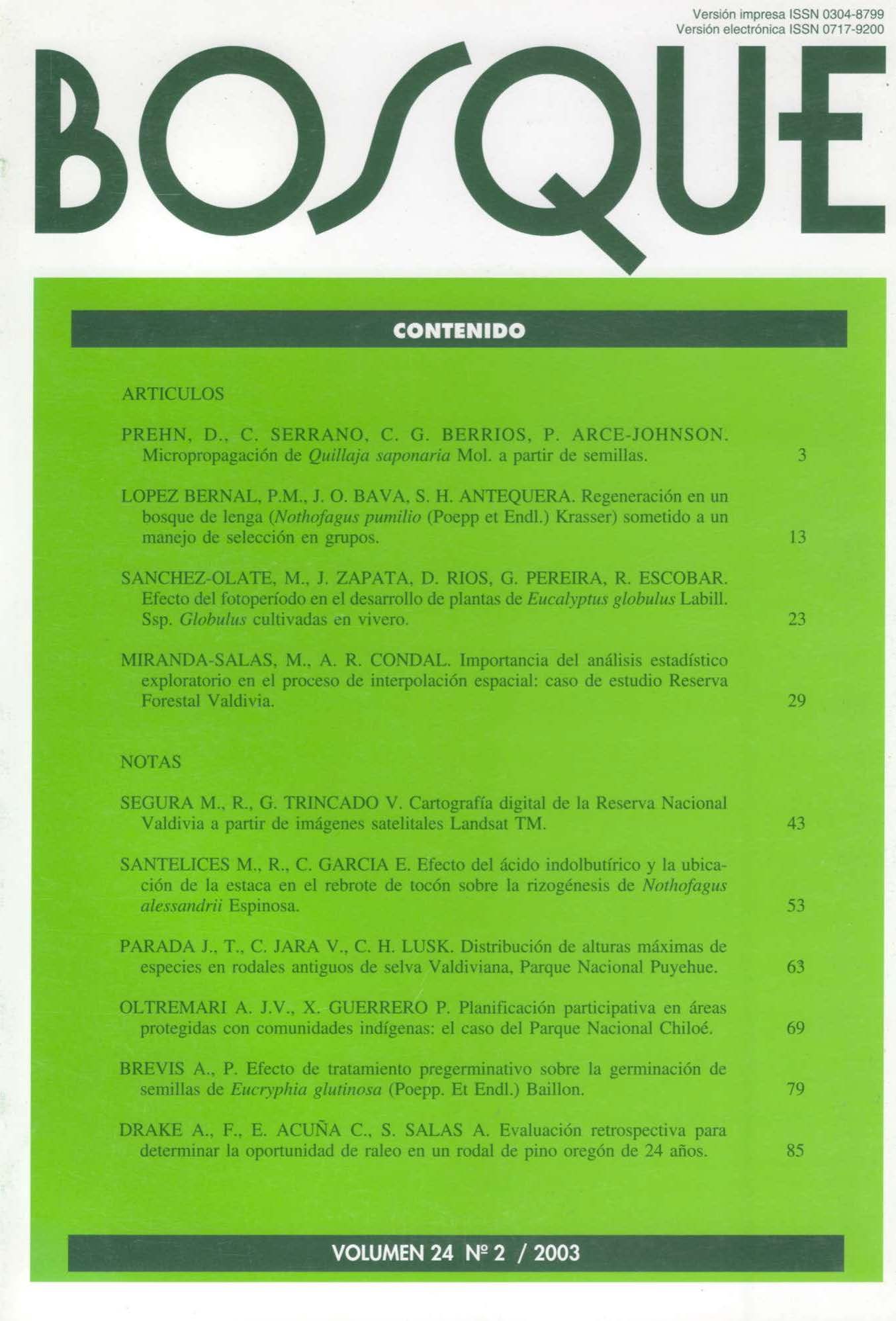Micropropagation of Quillaja saponaria Mol. starting from seed
Main Article Content
Abstract
Quillay is an endemic tree that grows between the IV and IX regions of Chile. Because the bark of quillay has a high commercial demand, a propagation program for the large-scale economic production of this tree was developed. For this purpose, a protocol was designed for the in vitro culture of quillay seeds. Seeds were disinfected with Dithane, sodium hypochlorine and hydrogen peroxide, and then stratified in MS culture medium. Explants were obtained from the germinated plants and transferred to establishment medium. Supplementation with casein hydrolysate, magnesium sulfate and glutamine were appropriate to establish quillay seedlings, and the addition of 1 mg/L BAP to the culture medium resulted in a high number of lateral shoots. The elimination of casein hydrolysate and the addition of 0.1 mg/l indolebutyric acid (IBA) induced roots in 59% of the shoots. Rooted plants were acclimated in a culture chamber and transferred to the greenhouse. This protocol generated 120 plants that after six months possess new leaves and a size between 20 and 70 cm.

